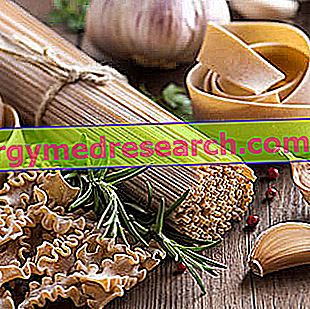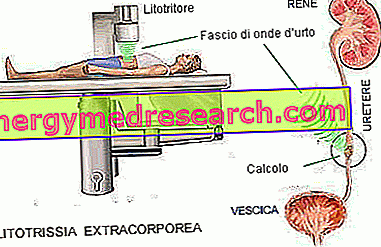Introduction
Widely exploited in the dairy industry for the production of fermented rind cheeses, Penicillium is among the edible and useful molds. The "usefulness" of penicillium, however, is not limited simply to the food industry: this mold, in fact, finds extraordinary applications in the pharmaceutical sector. Some of the more than 300 species belonging to the Penicillium genus produce penicillin, a molecule exploited as an antibiotic for its ability to inhibit or block the replication of some pathogens, after infection.
General and microbiological

Molds are multicellular fungi characterized by a vegetative structure known as the mycelium. The mycelium, in turn, is made up of hyphae, thin and long filaments.
The Penicillium mycelium is formed by a rather branched network of hyphae, generally colorless.

Many species belonging to the genus Penicillium are responsible for numerous processes of food deterioration; other species are instead feared for their ability to produce highly toxic mycotoxins. In fact, in addition to Aspergillus and Fusarium, Penicillium is a genus of mycetes capable of producing mycotoxins: if Aspergillus is known for the production of aflatoxins and Fusarium for fumosinins and trichothecenes, Penicillium mycotoxins are known as ochratoxin and patulin.
Penicillium molds can grow on seeds and on many foods; also the fruits and the plant bulbs are targets of Penicillium contamination, above all citrus fruits, garlic, apples, pears.
Other species are feared for their pathogenic effect on animals. For example, P. marneffei is responsible for both deadly infections in the rats of Vietnam and opportunistic infections in AIDS patients in south-east Asia (the topic will be analyzed during the course of the article). Furthermore, P. corylophilum, P. fellutanum, P. implicatum, P. janthinellum, P. viridicatum, and P. waksmanii harm mosquitoes.
Infections carried by Penicillium do not stop only with living beings: in fact, some species are known for the damage they can do to machinery and some substances. P. chrysogenum, P. steckii, P. notatum, P. cyclopium, and P. nalgiovensis can damage fuel; in the same way, also P. chrysogenum and P. rubrum damage lubricants and oils.
Food applications of Penicillium
As mentioned in the beginning of the article, numerous species of Penicillium play a major role in the manufacture of dairy and meat products. For example, Penicillium camemberti and Penicillium roqueforti are exploited for the production of camembert, roquefort, and brie cheese. Penicillium glaucum is instead the undisputed protagonist of gorgonzola.
P. roqueforti mold is usually added to the milk in the form of a graft: this penicillium initially forms a colorless mycelium, and then turns into green or blue. Depending on the starter used (the penicillium stock considered), different color shades can be obtained. The choice of a strain rather than another affects the proteolytic and lipolytic activity.
As for the importance of Penicillium for the meat industry, we recall Penicillium nalgiovense, used both for improving the taste of some sausages and hams, and for preventing the colonization of other molds and bacteria.
Pharmacological applications
The discovery of the drug synthesized by Penicilliun P. chrysogenum (also called P. notatum ) dates back to 1929: the penicillin produced by this mold inhibits the growth of gram-positive bacteria. P. griseofulvum produces a powerful antifungal, the Griseofulvin.
Along with Aspergillus, Penicillium is also known for its ability to create biotechnological products (enzymes and macromolecules such as pectnase, amylase, lipase, gluconic acid, citric acid and tartaric acid). It is curious how the birth of the very first biotechnological medicines goes back to the manufacture of antibiotics with microorganisms, including the penicillins produced by Penicillium.
Penicillium and infections
The P. marneffei species is the etiopathological agent involved in penicilliosis, a disseminated infection that affects the endothelial reticulum system. Penicilliosis appears to affect almost exclusively AIDS patients, since penicillary - in healthy subjects with an uncompromised immune system - is unable to colonize.
P. marnaffei appears to be the only species of the genus Penicillium capable of causing human damage: the infections carried by this mold give poor prognosis in most cases, drawing a symptomatological picture very similar to that caused by cryptococci.
The symptoms are:
- Initial phase: asymptomatic or characterized by flu-like symptoms
- Intermediate stage of infection: anemia, fever, pulmonary infiltrate, lymphadenopathy, leukoplakia, thrombocytopenia and cough
- Final phase: skin affections on face and trunk (blood dissemination), anorexia, asthenia, cachexia, death
Therapy should begin as soon as possible after the onset of symptoms. In general, the treatment should be continued for a rather long period of time, estimated at around 10 weeks. The most indicated drugs are amphotericin B and flucytosine, to be taken for 14 days starting from the diagnostic assessment. It is recommended subsequently to replace these drugs with itraconazole, until the end of the therapy. DO NOT interrupt therapy for any reason even if the symptoms are remedied (unless otherwise indicated by the treating physician). Following a precise and adequate treatment plan, Penicillium marneffei infection can be eradicated.



